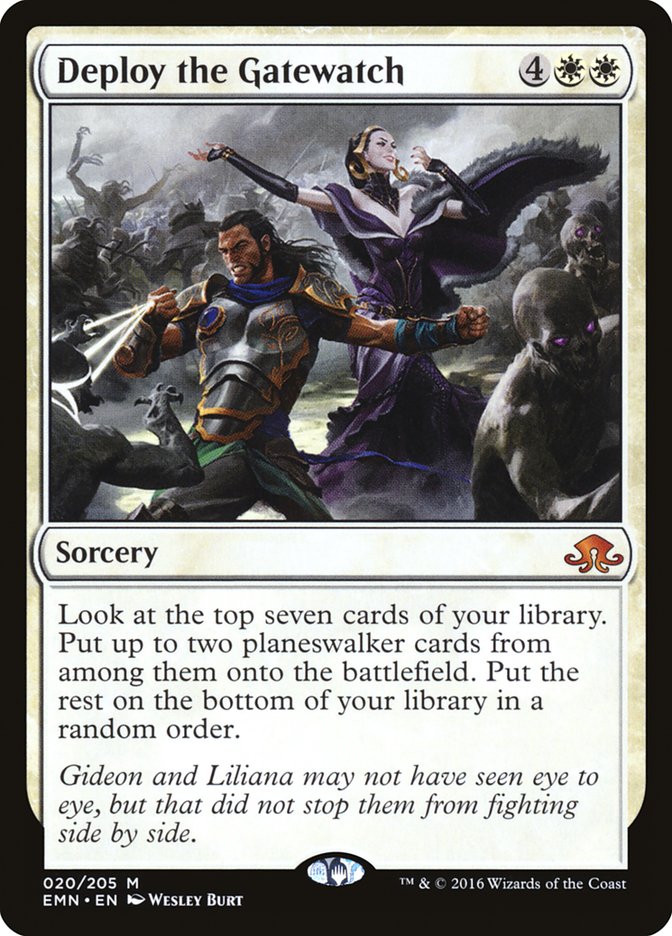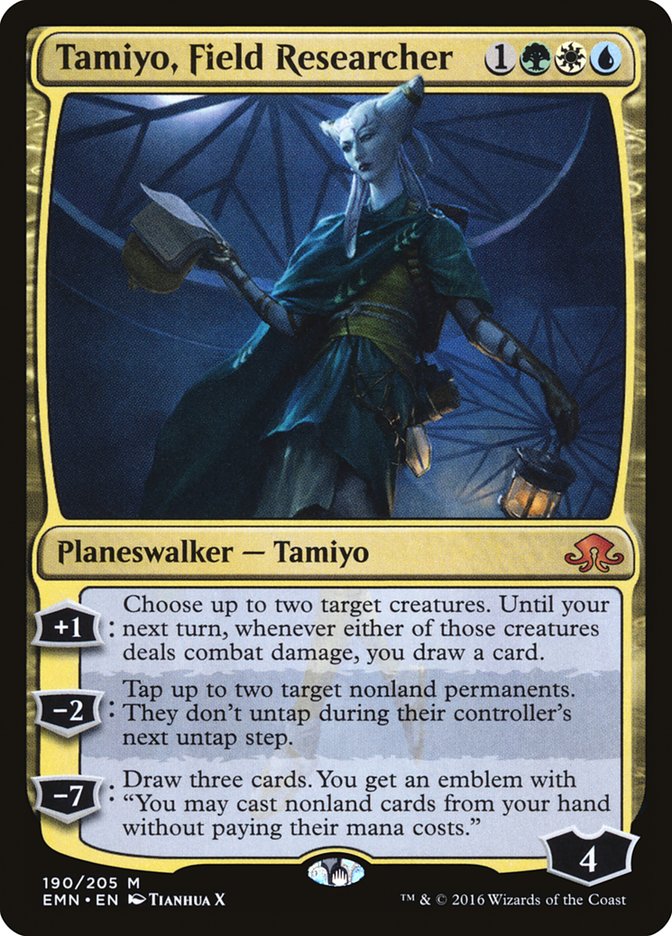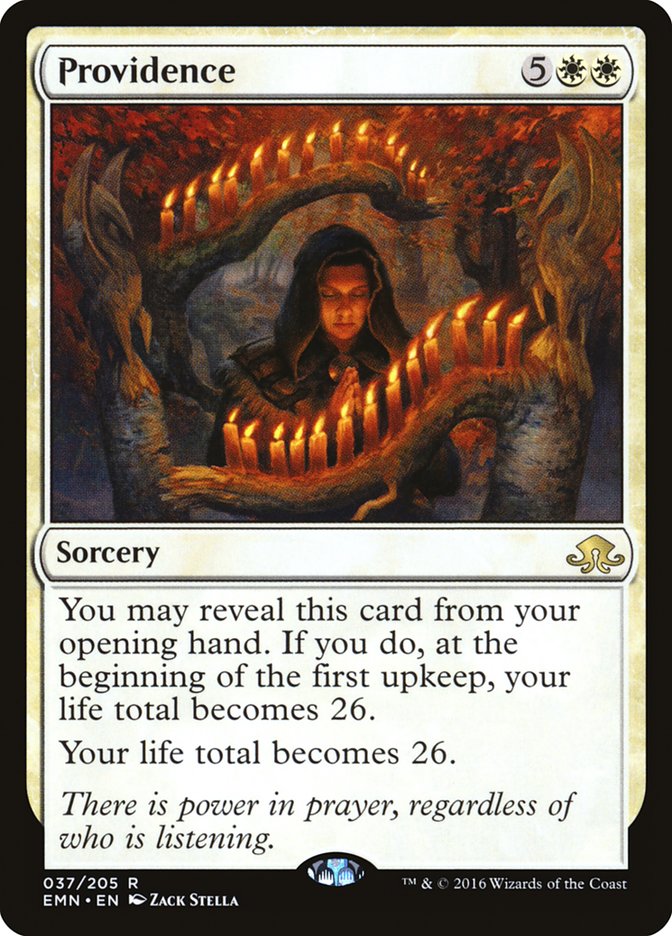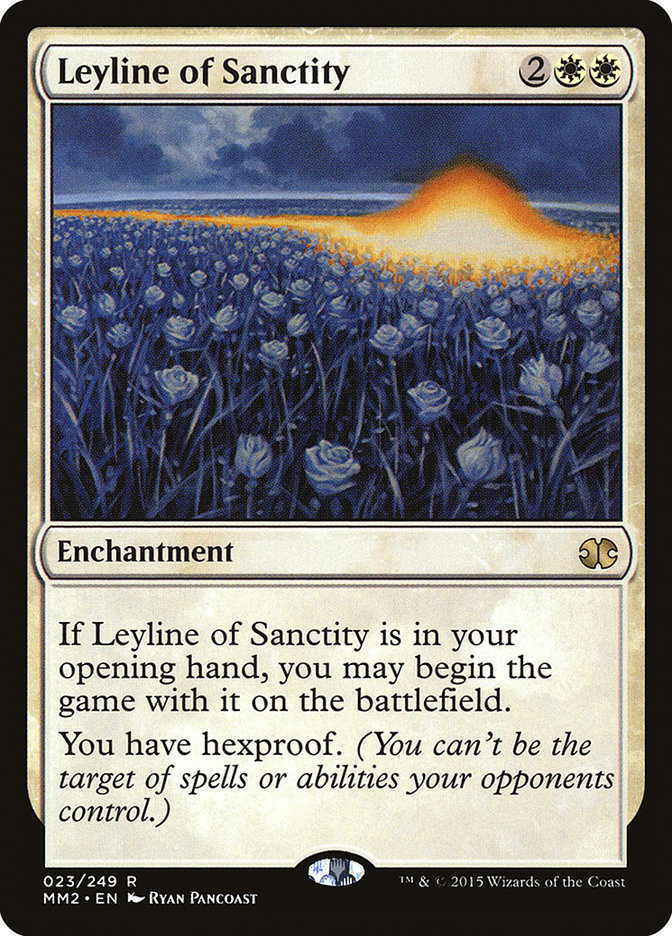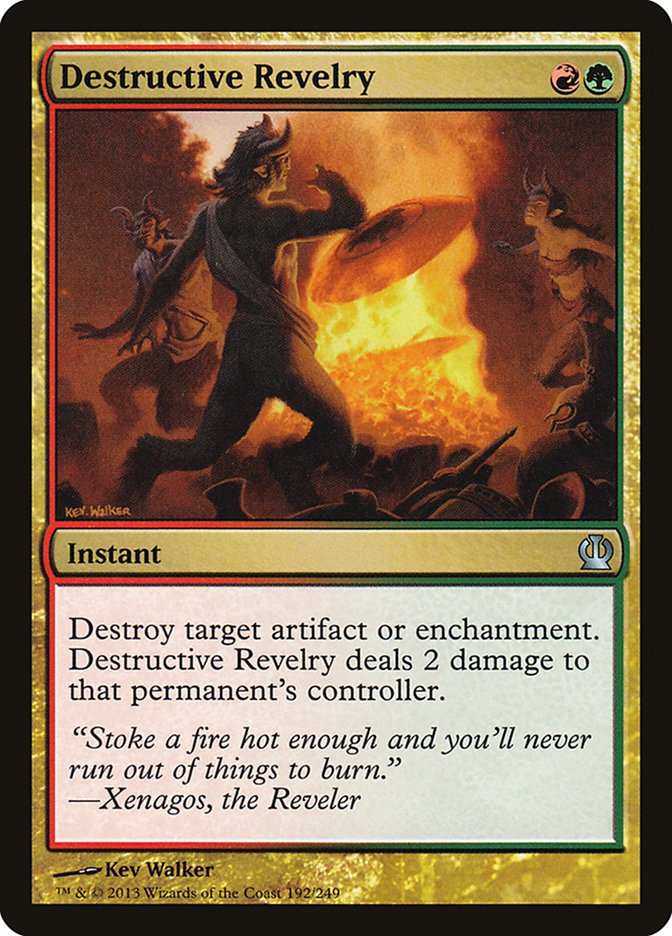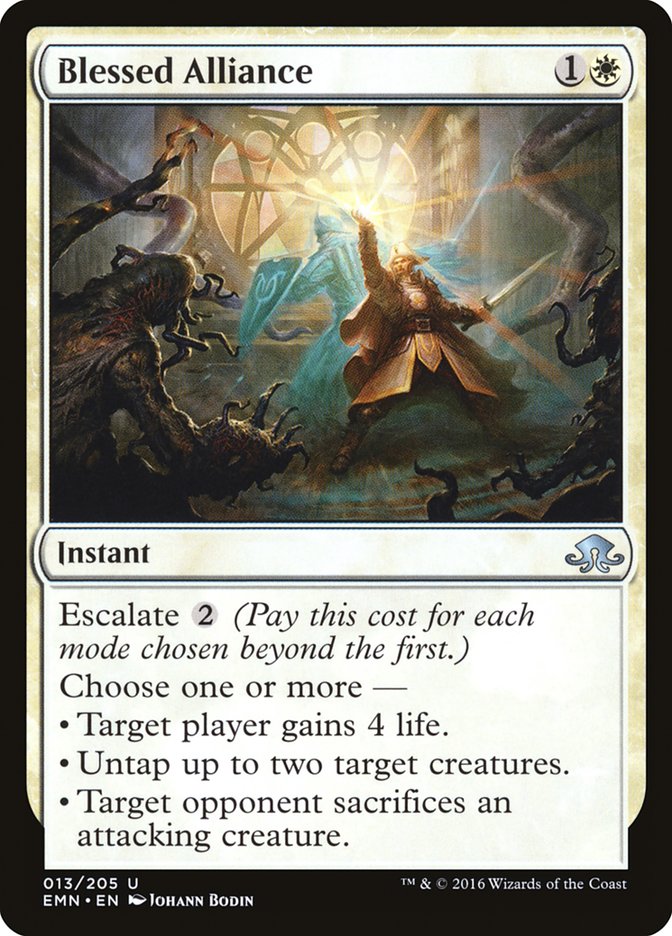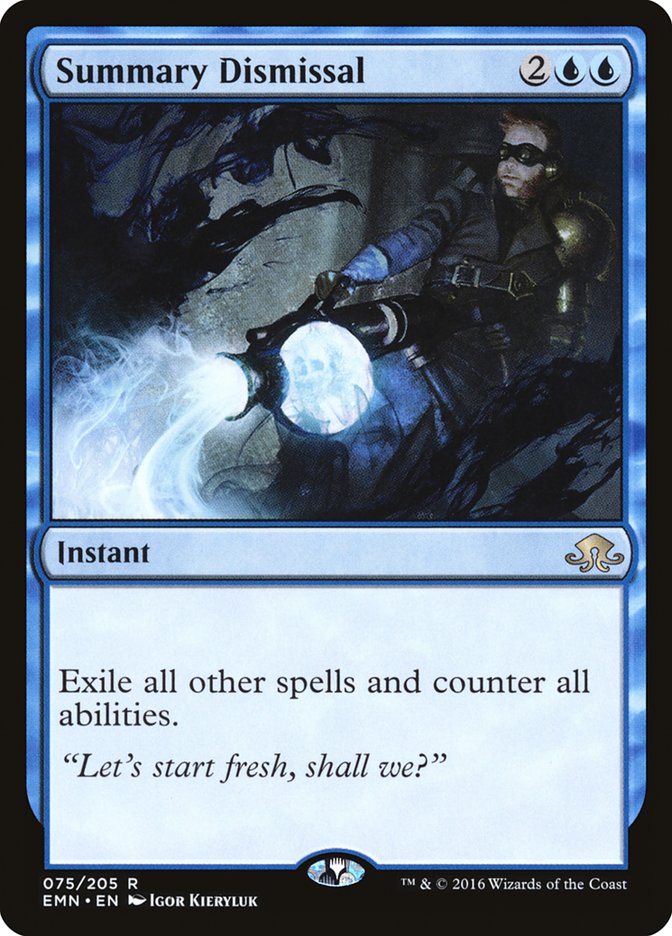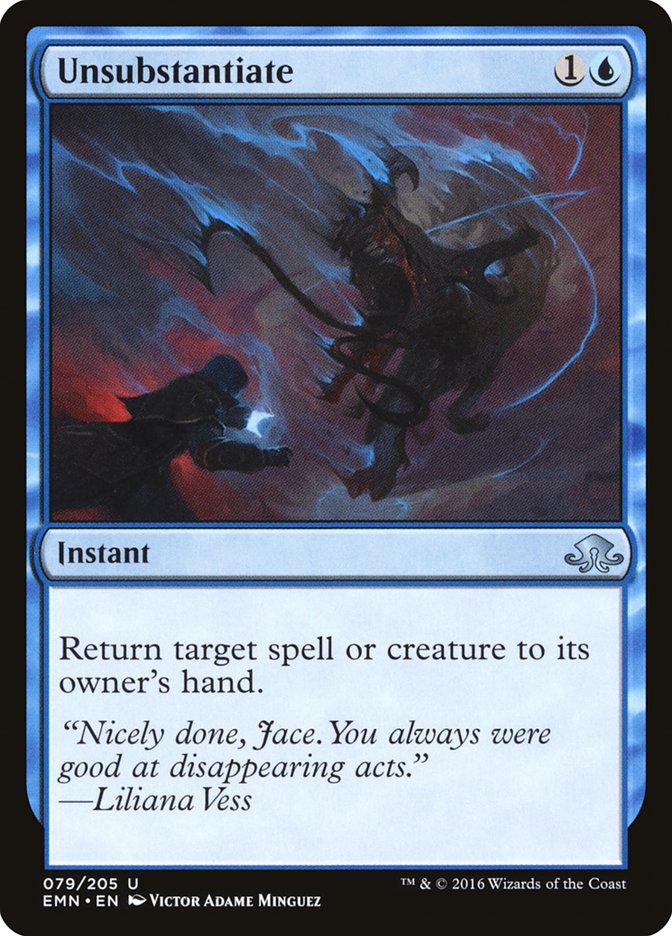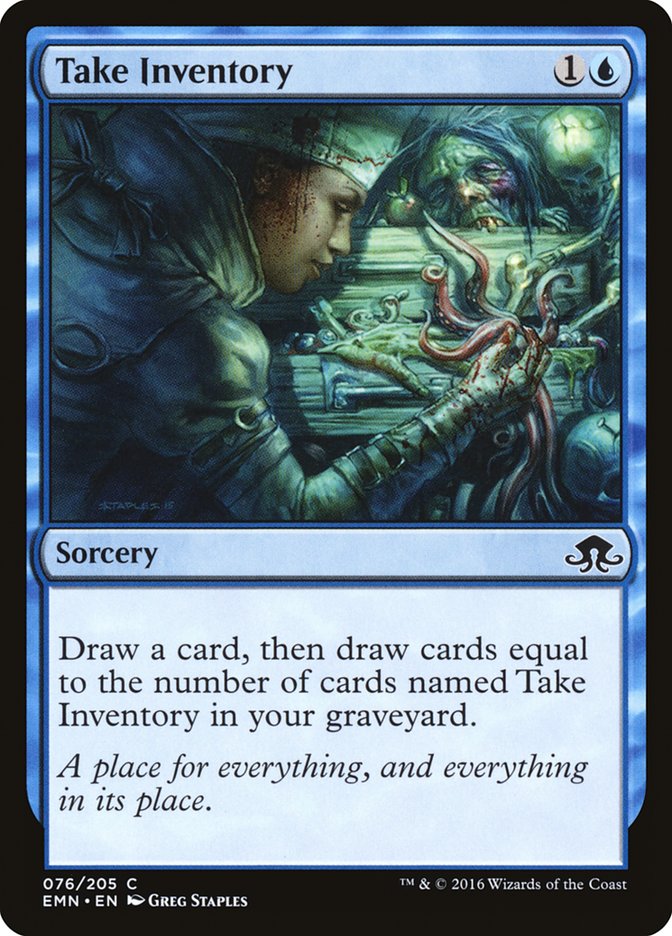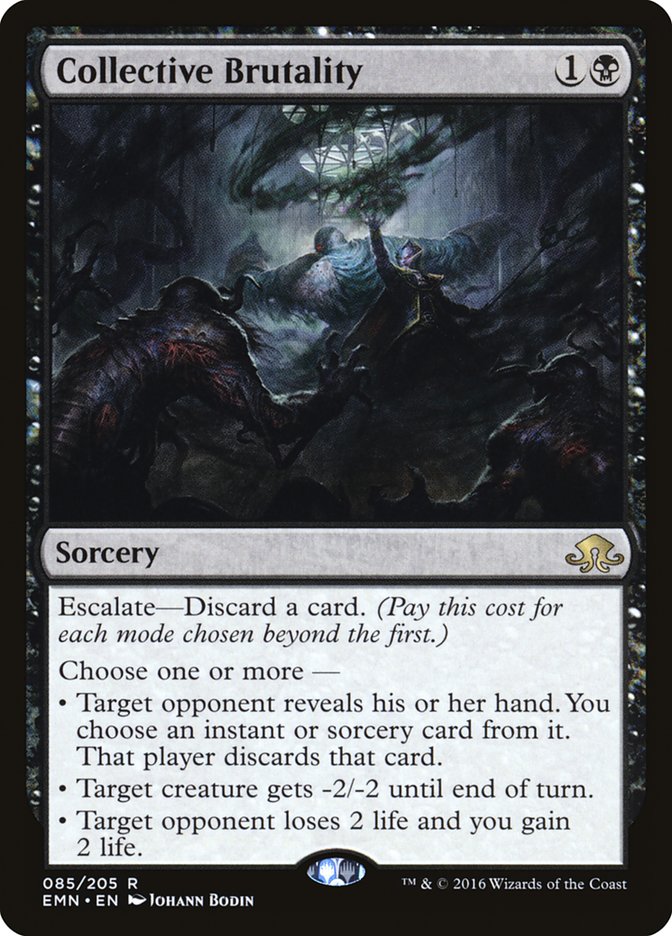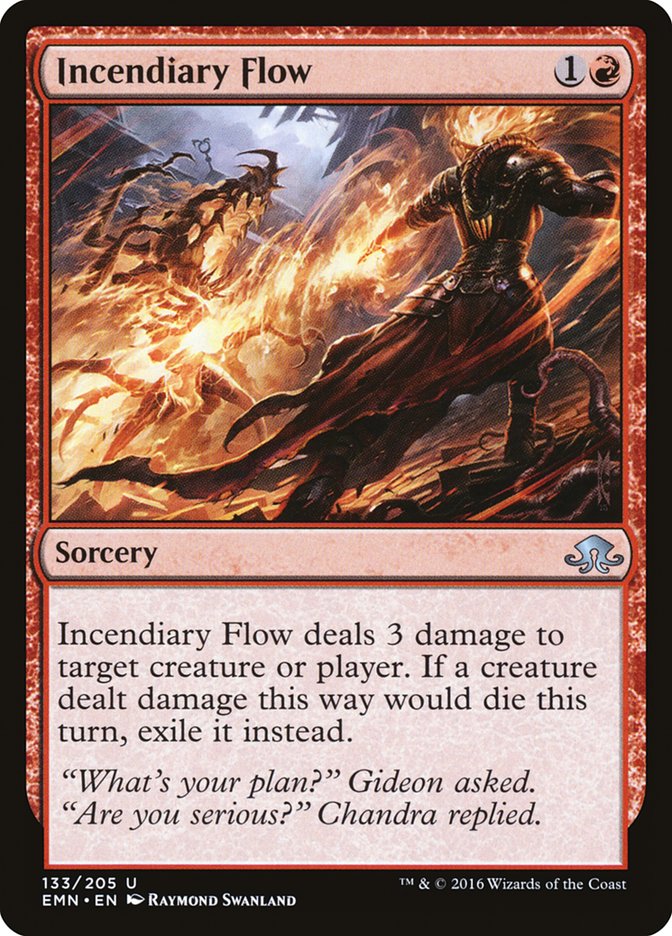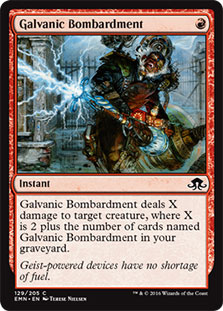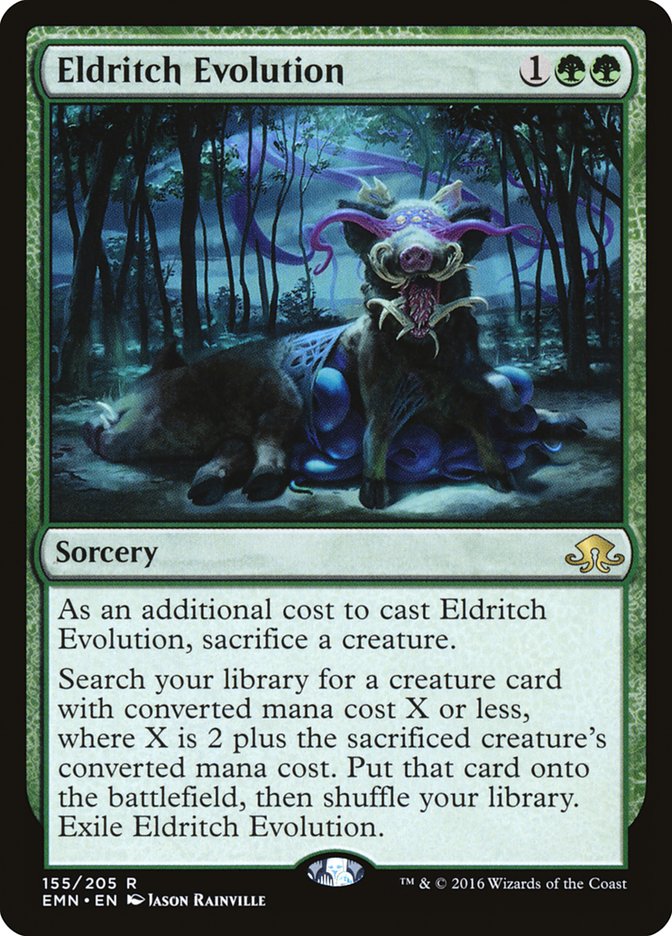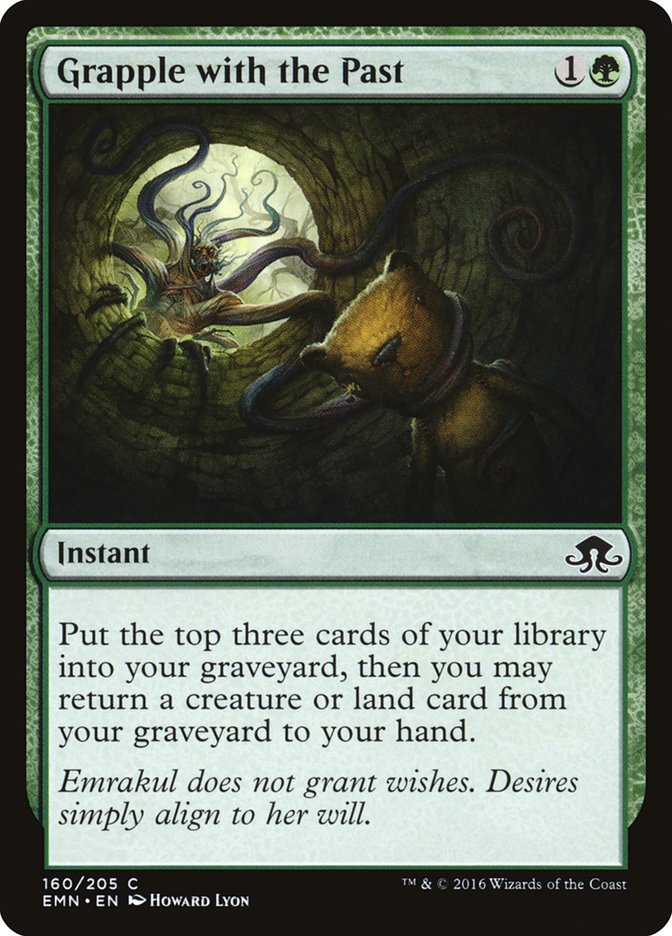Last week I discussed some projections for how the tribes might play out during this coming Standard season. This week, I’d like to look at some unsung heroes and core building blocks of Standard, the instants and sorceries we know we’ll have access to with Eldritch Moon‘s release.
Escalate is a sorcery- and instant-specific mechanic that I’m really excited to play with. As with all “kicker” variations, it does a serviceable job as “flood insurance,” but what I really like about it is less that it scales up as you have more lands, and less that you can get something out of it when you don’t have enough lands (even if you were planning for more when you put it in your deck), but really how it works under optimal circumstances, when you still have to decide when you want to pull the trigger.
Do you use it at the first time a good opportunity presents itself, or do you wait until you can use more modes for a bigger payoff? This fundamental question presents itself with almost any spell–kill their creature now, or wait to see if they play a bigger creature later, for example–but escalate really pushes the weight and intensity of the decision, and also highlights the virtue of patience. I really like game mechanics that can teach players something about the game that they can take with them even after they’re done playing with the mechanic.
Maybe a new player doesn’t use an escalating removal spell because they’re waiting to be able to use more modes, and then finds that the opponent plays an even better target, and they’re rewarded for waiting beyond the benefit of the additional modes. Maybe this helps teach them that they should wait more often, when it might never have occurred to them to wait in the first place. That kind of stuff is great, because it highlights how Magic can teach you things even when you’re not really trying to learn.
That’s the spell mechanic for this set, but as to individual cards, it’s probably easiest to go by color:
White
Obviously, the first comparison is to Collected Company, which has been a defining card in Standard, so if you think of that as a proof of concept, this card’s off to a good start, but that’s not really how card evaluation works. This is a six-mana sorcery, not a four-mana instant. It sees an extra card, so it’s even easier to find things, except that it’s a lot less common for a deck to be full of creatures than full of planeswalkers. Realistically, a deck starts to feel like it has a lot of planeswalkers at around eight, like G/W Tokens. By the time you’re at ten to twelve, it’s a dedicated planeswalker deck. The problem is, that’s under half as many planeswalkers as you’d want creatures in a Collected Company deck, and the one extra card doesn’t help that much.
The other problem is that planeswalkers all have the legendary rule, so if you just fill your deck with four copies of a bunch of planeswalkers, you can’t hit two of the same one, and it’s much less useful to hit one you already have on the battlefield, so it’s even harder than it looks.
Beyond that, while the casting cost limitation of Collected Company limits the power of the card, it also pushes you to build decks with a sleek curve that function well when you don’t draw Collected Company. There are no planeswalkers in Standard that cost less than three, so this is asking you to jam your deck full of cards that cost at least that much mana.
Verdict: While this card is super-fun and flashy, I don’t think it will be playable in any competitive Constructed format. In casual formats like Commander, however, it sounds like a blast, and having access to every planeswalker ever printed greatly increases its utility. Honestly, it makes me want to build a five-color Commander deck with all the Oaths and at least one planeswalker of every name that I can possibly justify, though I have no idea who the right commander would be.
This is a weird one. Gaining six life for no mana is actually a big deal against dedicated Burn decks, so this is actually a pretty good Leyline–probably not as good as Leyline of Sanctity, but this one doesn’t care about Destructive Revelry.
Your opponent can’t really do anything to work around it; they just have to deal six extra damage. I’m not generally excited about siding in seven-mana cards against Burn decks, but if that extra six life buys you time to get to seven mana, they’re not going to have much of a chance after you gain another twenty or so life. In Modern, if you’re playing a control deck that can make a lot of mana, I could see including one of these along with some copies of Leyline of Sanctity if you’re looking for more cards against Burn, since the second Leyline doesn’t do much but having both is great. I wouldn’t want many of these in my sideboard, though, since drawing two is terrible. In Standard, it doesn’t look like there’s going to be a Burn deck, but if things look different after rotation, the fact that I wouldn’t rule it out in Modern means it’s probably worth keeping in mind.
Verdict: Possible fringe role-player, but unlikely to actually see much play.
This is the first Escalate spell I saw, and I fell in love. We’re here for the Celestial Flare, of course, which I would call a fringe playable–it’s rarely right, but I did play it at the World Championships. This doesn’t get blocking creatures, but that’s a lot less important than attacking creatures anyway. It’s easier to cast, which is a big deal.
Next, this gains four life. “Two mana, gain four life” is generally quite bad, but four mana to answer a creature and gain four life? Now we’re looking at cards like Faith’s Fetters, Warleader’s Helix, and Ojutai’s Command. Adding lifegain to creature removal makes it muchbetter. We can put this in a control deck to give us early creature removal that doubles as a way to secure our victory going late, getting us safely out of burn range. Again, that hasn’t really been a thing in Standard lately, because red has been wildly unplayable with very few reasonable burn spells, but any set could change that, including this one.
If that’s all this card offered, I’d be interested, and I imagine some decks will consider playing it even when they can barely take advantage of the other mode.
“Untap two target creatures” is big game. It’s hard to frame and imagine. It’s hard to put cards that do that kind of thing in your deck because their value is so contextual, and you have no way of knowing if you’ll ever get into the right spot for it, which is why it’s so important that this card is good enough without this option.
The thing is, this mode sometimes becomes “kill two creatures,” so this card can kill three attackers and gain four life. That’s massive. The fact that decks can possibly play a card like this in Constructed is also potentially really warping to how games play out. Just like how in Standard now, you can’t really attack into four open green mana because you know Collected Company is coming, moving forward, if a white player has larger creatures than you and passes with two mana, you might just have to play as if their creatures had vigilance.
In a way, all a white player has to do to give all their creatures vigilance is demonstrate that playing this card is in their range and not tap out. That’s the kind of thing that potentially just gives white decks extra percentage in the longer term, the same way that counterspells’ mere existence gives blue players percentage because sometimes their opponents don’t cast spells, or the way that G/W Tokens sometimes wins just because the threat of Archangel Avacyn sometimes cuts off lines of play.
Last, “untap two creatures” is also notable for having some combo potential. Sometimes this just means that, while using other modes, you’ll also get to use a creature’s activated ability one more time, but in weird circumstances, this kind of thing can be part of a combo deck, like a deck that plans to use Twiddle to untap Priest of Titania to make huge amounts of mana.
Verdict: Love it, but I’m not sure it’ll actually see all that much play, because white is currently flooded with good options for removal.
Blue
This feels like the next level in a hacker-style arms race–first, there was Counterspell, and it stopped any spell. Then, some spells became uncounterable, and eventually, cards were printed that worked around that, like Time Stop and Mindbreak Trap. Then there were cards with cast triggers that happened even if the spell was countered, and now we have an answer to that too (okay, Time Stop already had us covered there, but this is more realistic mana-wise).
This whole phenomenon reminds me of the joke behind the Unhinged card AWOL–things used to remove cards from the game, but then cards started interacting with them as if they were still part of the game, so it was clear they weren’t really removed from the game. In addition to this joke, it also led to a change in terminology to create the exile zone, but this feels similar: “This is uncounterable,” followed up with “Yeah, but, see, while this functions just like a counterspell, I’m not technically countering your spell.” Despite all that, in practice, I think we’ve gotten to the point where we kind of need an answer to all these Eldrazi abilities that aren’t spells, so I’m glad the option exists, and it’s costed highly enough that it can really only be a sideboard option.
I also like having a Stifle effect around, just so you don’t always know your activated abilities are going to work. It’s good to keep players on their toes.
Verdict: Useful role-player, but only as a narrow sideboard card
This seems to be one of the more heralded cards early on, and I don’t necessarily get it. I mean, sometimes a two-mana bounce spell is fine and all, and obviously this gets around uncounterable in a way that even Remand doesn’t, but drawing a card isn’t some trivial fringe benefit on Remand; it’s most of the point. Yes, this is maybe a playable Unsummon, and Vapor Snag taught us how great that can be, but two mana is worlds different from one on a tempo spell, and that was always all about Snapcaster Mage anyway.
Verdict: Overrated, playable, but I don’t think it will often be correct to play four. It’s easy to imagine it being very good as a singleton or duo in some sideboards.
I’m really sad that this is a sorcery. Blue hasn’t been good lately, and this is actually the kind of card I’d really like blue to have. Not backbreaking, but it gives it a plan going long. At sorcery speed, this is basically horrible for any conventional usage. The only reasons it has any chance are an abundance of self-mill, which almost certainly won’t be enough, and the existence of the Jace’s Sanctum deck, where this actually happens to be exactly what they want. When this only costs one mana, it doesn’t matter so much that it’s a sorcery, especially since that deck’s happy to tap out most of the time anyway, and all the scrying and card drawing makes finding lots of these very easy.
Verdict: Disappointing, but oddly perfect for the Jace’s Sanctum / Part the Waterveil deck.
Black
I’ve seen some hype for this card, but I don’t get it. What’s the selling point here? -2/-2 on a sorcery? Just give me Dead Weight at that point. I can discard a card to drain them for two while I’m at it? Hard pass. Make someone discard an instant or sorcery? Yeah, I’m not really into two-mana discard spells that might miss. I guess the best case is that I play this against a deck with Jace, Vryn’s Prodigy, where I can be pretty sure they have instants and sorceries in their hand? Maybe I’m just imagining that I can read the cost of discarding a card as an advantage, that this will be my madness enabler? That sounds pretty bad, since I’ve already spent two mana this turn.
Verdict: Massively overrated, but I can imagine that I’m wrong on this one.
Yes please! Yeah, it’s never been great. It’s a strictly worse Hero’s Downfall, and we already have Ruinous Path, but if there’s one thing we learned from the transition from Hero’s Downfall to Ruinous Path, it’s that having the option to awaken is nowhere near as good as being an instant. So much worse, in fact, that I think I’m willing to give up killing planeswalkers to get instant speed back. Really, I’m expecting to play a mix of these, so that I can use Murder early, when the tempo of casting it on my opponent’s turn matters, and so that I can kill creature lands, but I’m also going to want a few Ruinous Paths to answer planeswalkers and maybe awaken in the late game.
Verdict: A welcome tool. Black should have better removal than white, and this helps balance things out a little.
Red
On the one hand, this is exactly what red’s been missing. We haven’t seen any good red aggressive decks because the cheap burn spells can’t target players, which means they’re just narrow removal spells, and at that point, you’re just better off using white or black creatures with their better removal spells. The structural advantage of red has always been that its removal spells are never dead because they can change modes and help attack the opponent instead. Then somehow we entered an era of Oath of Chandra, Draconic Roar, Lightning Axe, and Fiery Impulse, and red had no real purpose or identity.
Is this the card that will change all that? Hard to say. There still aren’t a lot of draws to red, and while this is a palatable burn spell, it’s nothing exceptional. Exiling a creature is nice, but in total, I’d say this is still slightly worse than Lightning Strike.
Verdict: Basically necessary to red’s identity, but possibly not strong enough to bring red into prominence.
Why? I don’t even want to play red, and I wish this thing could hit players so that we could have multiple good, cheap burn spells and red could be a thing again. Yeah, it’d be slightly too good, but as is, this is just completely indistinguishable from Fiery Impulse (usually very slightly worse, I’d guess).
Verdict: Irrelevant while Fiery Impulse is legal.
Green
Yeah, you know about this one. I touched on it some last week. It’s caused things like a spike in the price of Allosaurus Rider, and people all over social media have been saying the card’s broken.
Personally, I’d love to see this get really cute with something like Vine Dryad or Skyshroud Cutter in Legacy, but I doubt that will happen.
In Standard, it’ll be awesome if cards like Eyeless Watcher start leading to decks with toolboxes of various sweet six-mana creatures.
This card’s very good. I don’t think it’s broken in Standard, just powerful, and it’ll be interesting to see if it leads to an increase in the prevalence of counterspells in Standard, just because countering this is so good.
Verdict: This is the real deal insofar as it’s a powerful card, but I’m skeptical of the best-case scenarios being touted in Modern. It feels hard to get all the pieces into a coherent and reliable deck.
The Green Anticipate to Oath of Nissa’s Ponder. Not quite a Grisly Salvage, but on a card that’s potentially trying to fix your mana, only needing a single color of mana to cast it is a big advantage. Also, this is better in the late-game, as you can find anything in your graveyard, not just something you milled with this.
I’m not sure what the deck is that can use it, but it’s priced just right for Constructed, and I’m really glad it’s an instant. I think this might be the Gather the Pack that I always wanted to make delirium work, and I sincerely hope I get to spend a lot of time testing decks with this card, even if it’s not good enough to really make it.
Verdict: Love it, but there’s a chance green just doesn’t have time to be spending two mana this way in Standard.
The spells available in a format really shape what the colors are capable of, and which strategies have proper support. None of these cards are format-defining the way Dromoka’s Command or Declaration in Stone is, with the possible exception of Eldritch Evolution (more appropriately compared to Collected Company), but there’s a chance that Incendiary Flow breathes some new life into red as a color, and I’m hoping Grapple with the Past pairs with a few other good payoffs and enablers to allow delirium to come into its own in Standard.


